Tasting Lake Saimaa, Finland - 4th interregional meeting
How the Finns produce, present and enjoy their special food heritage in an innovative and sustainable way?
The unique food heritage of Lake Saimaa region in Finland was in the focus of project SMEOrigin’s 4th Interregional meeting in Savonlinna in September 2024. The event took place between 3 - 5.9.2024 to explore the endeavours related to the promotion of local food in the region that has been awarded European Region of Gastronomy 2024.
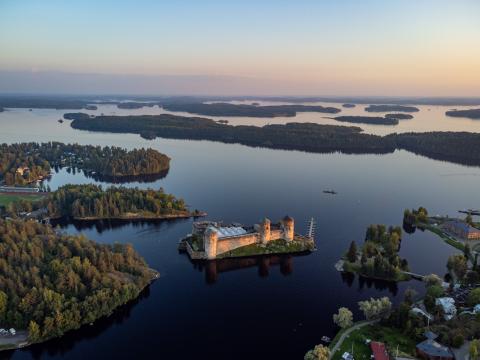
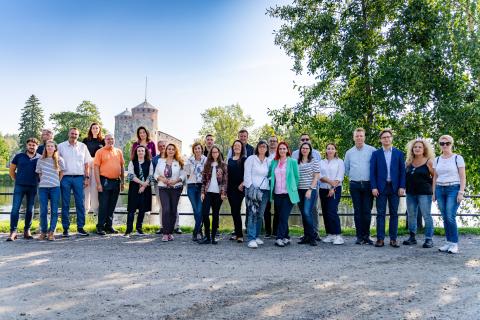
The products of Savonlinna and Lake Saimaa Region
During the visit to this remote and sparsely populated region of Finland, partners from the SMEOrigin project explored some unexpected aspects of food production and food culture. One of the major food producers in the region (though not and SME) turned out to be … Mother Nature! Finnish lakes, forest and seas supply a huge amount of wild-growing food to local people’s table. Like the muikku fish, a favourite delicacy. And the tens of different mushroom varieties that bring unvaluable (an immensely tasteful) nutrition to the table. Not to forget the superfood – the various wild berries growing in the forest and used in almost every dish. When it comes to meat, reindeer sometimes appears on the table and this is perfectly normal – in Finland Santa’s helpers are quite common and not endangered at all.
Besides the nature’s gifts, local agriculture and farming businesses produce high-quality and valuable grains, dairy, sheep and beef.

Puruvesi Vendace (Puruveden muikku)
Muikku fish (vendace) comes from the clean and cold waters and Lake Saimaa and is one of the most appreciated products from the region internationally. Puruvesi Vendace PGI is the fish specialty sourced from the extremely clean Puruvesi lake, a part of the Lake Saimaa system. In the village of Kerimaki there is a recently established Fish House – an enterprise that collects the catch from local fishermen, cleans the fish regarding the highest quality standards in the industry and distributes it to the next levels across the value chain, including shops, restaurants, processing facilities, etc. The initiative was also reported as a Good Practice on the SMEOrigin Interreg Europe website.
Muikku fish is usually served fried. Vendace roe is a special delicacy appreciated by high-level chefs in the region and not only.
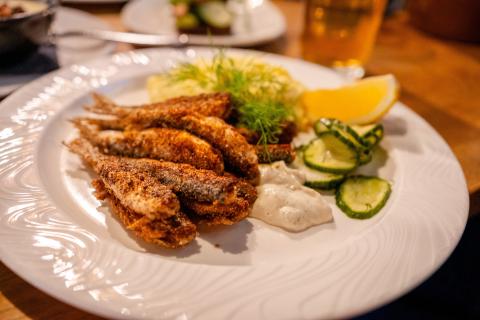
Street food: Lörtsy
Lörtsy is a traditional Finnish pastry originating from Savonlinna, characterized by its half-moon shape and thin, crispy dough. It can be sweet or savory, with common fillings including meat, rice, and vegetables for savory varieties, or apple jam for sweet versions. This versatile snack has become a beloved part of Finnish street food culture, often served at markets and festivals. Its portability and satisfying texture have made Lörtsy a favorite choice among locals and visitors alike, especially during events such as the Finnish Food Day, where regional specialties are celebrated. SMEOrigin partners had the chance to taste Lörtsy during the Local Food Day event in Savonlinna on 4.9, organized by local authorities to celebrate regional food treasures. Another highly appreciated food on the market was the rye porridge.
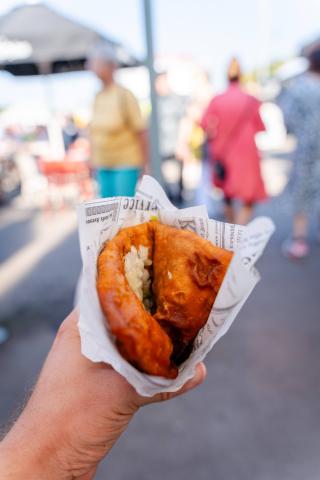
Mushrooms
A unique exhibition of wild mushrooms was presented by a vendor at the Local Food Day market. It showed not only tasty and edible mushrooms, but also dangerous species that should be recognized and avoided at all times.
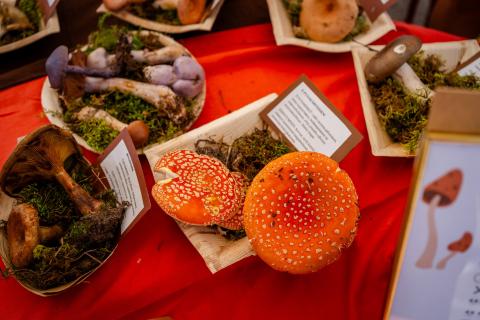
Superfood: Berries
The Lake Saimaa region is home to a rich variety of wild berries, often hailed as superfoods due to their high nutritional value and health benefits. Among the most notable are blueberries, lingonberries, cloudberries. These berries are packed with antioxidants, vitamins, and minerals. Lingonberries are the most popular fruit in Finland, rich in vitamin C and dietary fiber. In the summer season, most local people head to the forest to pick berries and the fruits are also widely available on the market. The wild berries a staple of the local diet and an essential part of Finnish culinary tradition.
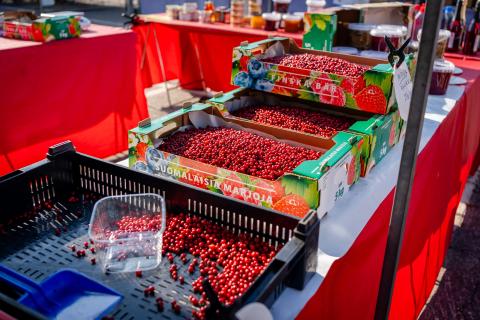
Preserving the food heritage via connections and gastronomy culture
The topic of preserving regional food heritage was addressed by multiple projects in the past years. Read the next article to discover them and their outstanding results.
Preserving the food heritage via connections and gastronomy culture

